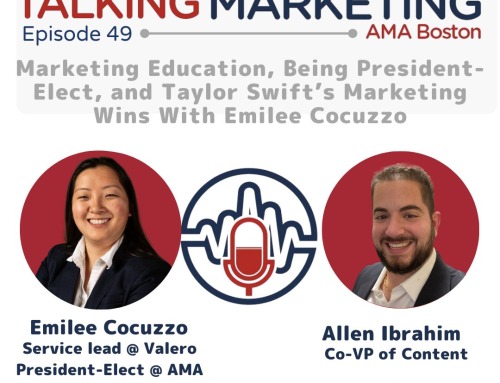If you’re giving a presentation and your audience members are looking down at their electronic devices, not up at you, don’t be annoyed, be pleased.
As someone who speaks often at industry conferences and events, after all, I know that if those in my audience are looking down at their phones, tablets and laptops, they’re probably not ignoring my presentation. They’re likely sharing what they’re hearing on social media, which is exactly what I want them to be doing on my behalf. I want them to be amplifying my message to their own networks, extending the reach of what I’m saying to a much larger number of people.
That’s what I would call the “socialization” of my presentation. And that’s what I would think every public speaker today would want their listeners to be doing for them, too. It may be disconcerting at first. It may even be distracting. But it’s increasing the audience for your presentation exponentially. Like the click-click-click of the cameras at a big press conference, everyone is busy capturing the moment, only in a variety of different ways unique to each respective audience member.
Of course, a speaker wants everyone in the audience to be paying attention, hanging on his or her every word. But the reality is that when they’re sharing what they hear with their own online followers and friends, they’re concentrating even more on recording just the right sound bite or image. They’re even more engaged with what you are saying as they realize the magnitude of their responsibility to report on the event accurately, informatively and entertainingly.
Here are 10 ways public speakers, instructors, trainers and anyone else who finds themselves in front of an audience should use social media to promote their own presentations…
1. Encourage social media use among your audience. One of the first things I say to my audience when I take the stage is to not hesitate to use social media. After all, I want them to share their impressions of my presentation with their own respective networks. They get the benefit of having unique, new content to distribute and I enjoy the exponential increase in reach to a much broader audience. Its’ a win-win situation that’s well worth encouraging.
2. Include your handle and hashtag in slides. If you’re going to be drumming up social media usage, it would be remiss of you not to include where you can be found there on your presentation’s slides. At the very least, share your Twitter handle on your title slide and perhaps on every other slide, too. You should also list wherever else you have a presence on social media – e.g., YouTube, Instagram, LinkedIn, etc. – on an individual slide that also includes your bio, not to mention the event’s hashtag (assuming there is one).
@johnfoleyjr opens up his keynote by encouraging people to tweet something if they hear or see something they like… @NEDMA #MTechSummit pic.twitter.com/DrkCMklRK6
— Bob Cargill (@thebobcargill) November 1, 2016
3. Tweet before and after your presentation. Publicizing your presentation nowadays means using social media to talk about it both beforehand and afterwards. Some of this content can be scheduled in advance to give you a steady, uninterrupted presence on these online communications channels while the rest of it should be real-time engagement with your followers and fans.
Fav pic! RT @cargillcreative: Says @JeffreyHayzlett at #Bridge17, “Adapt, change or die…those are our options.” pic.twitter.com/anaEV8v8Qo
— Jeffrey Hayzlett (@JeffreyHayzlett) August 5, 2017
4. Record your presentation. Have someone record your presentation on video, which will likely give you some great content afterwards to share – in dribs and drabs – with your constituents on social media. If the quality is good enough, you can even upload the entire presentation to YouTube.
5. Live-tweet your gig. Having someone capture what you’re saying in the moment is an excellent way to report extemporaneously on your presentation, taking full advantage of any real-time buzz about your presentation and leveraging every little thing you are saying in the moment. Retweeting, liking and engaging with your audience is ideal, too, if you can get a colleague or friend to do this from their account for you while you’re on stage.
Two awesome presentations on actionable #marketing metrics given tonight by @KMHambelton and @ThorJohnson at @amaBoston's #MetricsMatter17 pic.twitter.com/yVq68q8gV4
— Bob Cargill (@thebobcargill) January 25, 2017
6. Get away from the podium. Moving around the room is a good idea for a speaker in general, as it is a much more engaging and compelling way to deliver a presentation. You don’t want your audience’s view of you to be obstructed in any way, shape or form. You want to give them as many photo opportunities as possible as well as the best chance to see you up-close and personal. You’ll make a stronger connection and better impression that way as well.
"No one knows what's possible until they are actually doing it," says @Liz_Murray at #Bridge17 pic.twitter.com/dRNI0gu1yV
— Bob Cargill (@thebobcargill) August 4, 2017
7. Include quotable quotes. Make it easy for members of your audience to provide coverage of your talk. Provide them with catchy visuals and short sound bites. Have a handful of clever, memorable one-liners rehearsed in advance and delivered at key, prominent moments. Feature this content prominently in your presentation. Create each of your slides for prime-time viewing, that is, with the intention of them going viral. Make it hard for your audience not to want to repeat what you share with them time and time again.
"You can't manage what you can't measure," says @GaggleAMP's @glenng at @NEDMA's #MTechSummit… pic.twitter.com/AkGwQ4owUn
— Bob Cargill (@thebobcargill) November 1, 2016
8. Pause on your best slides. Pacing is important. If you have a hit slide or message on your hands, pause and pose for the crowd. Seriously. Take your time on the highlights of your presentation. Take it slow. Milk it for everything it’s worth. If you have a strong point to make, or a great visual to show, your audience needs the time to capture and share the moment with their own respective audiences on social media.
@Selligent's @dfrankland shares his 7 steps to consumer-first #marketing with the audience at @NEDMA's #MTechSummit in #Boston… pic.twitter.com/S9a7cUj4lE
— Bob Cargill (@thebobcargill) November 1, 2016
9. Use gestures and props. You may be speaking to inform and educate, but you also want to entertain your audience. Accessorize your presentation with gestures and props. Not only do you want to engage and enlighten those in the audience, you want to dazzle and delight them, too. Appeal to their senses. Tease them with theatrics. Add elements to your presentation that will make it more photogenic, capturable and ripe for social media.
10. Summarize your presentation. When all is said and done, you want to review, repurpose and save your presentation for posterity. You want to summarize it for those who weren’t there as much as get even more mileage out of your efforts by reporting on it yourself. Use Storify, Twitter Moments or your own blog to recapture everything you said as well as what your audience had to say themselves on social media about the event.






